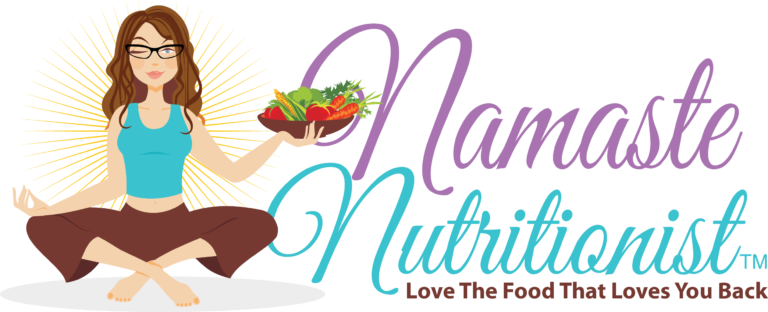Which foods are most prone to fraudulence? Here are the top six most counterfeit foods. Read on so that you can avoid the fake foods, which can not only cost you money, but they can hurt your health.
In the last episode, I gave you the background about how food fraud occurs, and why it’s an international problem.
If you didn’t listen to the podcast or read the blog post, please check them out here. Be sure to share this with people you love, so that they too can be safe. References are posted at the end of the blog post.
1. Baby Formula:
Baby formula poses considerable food fraud risk, as well as serious health risks. Remember the melamine-tainted baby formula in China? Formula is a popular target for organized retail theft. Adulterated milk can make it into formula, which obviously posing a serious risk.
How to stay safe: Experts suggest that parents’ purchase from a major retailer over less monitored venues, such as flea markets and online auctions. And avoid packages with blurred-out expiration dates, as criminals often tamper with expired formulas and change the expiration dates. Avoid packages with other signs of tampering.
2. Fish:
Seafood fraud is where misled consumers are sold lower quality fish believing they are purchasing a higher quality catch in order to increase profits. This actions can have negative impacts on marine conservation efforts and human health.
DNA testing found that 33% of fish samples nationwide were mislabeled, according to U.S. Food and Drug Administration (FDA) guidelines.
From 2010 to 2012, Oceana scientists conducted one of the largest seafood fraud investigations in the world to date, collecting more than 1,200 seafood samples from 674 retail outlets in 21 states to determine if they were honestly labeled. The highest mislabeling rates were with snapper at 87% and tuna at 59%.
Farmed fish also get advertised as more expensive wild versions. Illegally fished and contaminated shellfish often finds their way to fish markets and neighborhood fish and chip shops.
Sometimes, the deception is intentional. Scallops, for example, might actually be punched out circles from a whitefish fillet. A recent Consumer Reports study included a “grouper” sample that was actually tilefish, a species that the FDA’s advises pregnant women and young children avoid because of its mercury levels.
How to stay safe: Purchase whole fish when possible, as they are less likely to be fake. If you are so inclined, catch or raise your own fish.
3. Animal products:
Remember meat glue and pink slime? Well, the legacy lives on. Meat glue is a perfect example of how a consumer could easily pay top dollar for a premium cut of steak that is truly only several low-grade cuts glued together. It poses increased risk of bacterial contamination as well. As pointed out in a Mother Jones article, those pieces of glued meat represent higher surface area exposed to potential bacterial contact before they were glued together. This makes their risk more similar to hamburger, in which you need to cook the meat thoroughly to kill the bacteria. But unsuspecting consumers who might prefer their steak medium-rare wouldn’t realize they are facing an increased risk, one that they wouldn’t face if the steak weren’t glued.
Here’s another thing that might get your beef: A Europe-wide scandal surrounding the substitution of cheaper horse meat in what had been labeled beef products caught the most attention from consumers, regulators and investigators this year.
In addition to fish, poached animals can be packaged and sold as another type of legal meat. Or marketing conventionally-raised eggs as organic or free range. In February, the German authorities began investigating around 160 farms suspected of breaking rules on organic and free-range egg production.
How to stay safe:
As much as possible, purchase from local producers who you know and trust. Talk to them. Or, purchase from butchers who have a solid relationship with their producers.
4. Honey:
The Journal of Food Sciences study crowned honey as a top fake, accounting for 7% of all food fraud cases. Separate Food Safety News tests found a third of the fake honey from Asia were contaminated with lead and antibiotics.
How to stay safe: Your best bet is to purchase honey from a local, respected beekeeper. If you’re up to the task (and your county allows it), consider raising your own bees.
5. Milk:
Milk is the second-runner up for most common ingredient adulteration, at 14% of cases in the U.S. Pharmacopeial Convention’s Food Fraud Database. Adulterated milk is usually diluted and then laced with melamine to help increase the protein content and mask the dilution. The 2008 Chinese melamine milk scandal was the most high-profile incident, with the outbreak killing six infants and sickening more than 300,000 consumers. Experts say the problem is still more widespread in other countries.
How to stay safe: Be vigilant about powdered milk and similar products of unknown origin. Purchase dairy from a local farmer. Consider using non-dairy alternatives.
6. Olive Oil:
Olive oil takes the grand prize as food most subject to fraud, accounting for 16% of the database’s recorded cases. Most of the time, consumers are merely getting a bad deal — regular olive oil instead of pricier extra virgin, say, or a less expensive variety than the label promises. But in rare cases, varieties of non-food-grade oil may be added in, posing a health risk. The New York Times reported that engine oil is among the substances found in olive oil. In one of the more famous cases, more than 600 people in Spain died in 1981 after consuming “olive oil” that was actually a non-food-grade rapeseed oil intended as an industrial lubricant.
How to stay safe: stick to brands you know and sources you trust. Remember to take care when selecting olive oil by purchasing from honest, knowledgeable, fair suppliers. Also, review my brief post on finding fresh olive oil, which covers ways to avoid getting ripped off with rancid oil.
Obviously, we could adopt a more plant-based diet to reduce some of our exposure to fraudulent foods. You might note that the foods most prone to counterfeiting are animal-based. However, a plant-based diet is not universally appropriate, and I’m not promoting it in this article. I’m wondering what other precautions would you suggest people can take for being safe? Please leave your constructive comments below.
Leave a comment. I want to know your reaction!
Resources:
U.S. Pharmacopeial Convention’s Food Fraud Database
Oceana.org: Widespread mislabeling of seafood
Baby formula: Melamine scandal
New York Times: Counterfeit foods
Mother Jones: Meat Glue
Please share this post. And tell me, what’s the most surprising about food fraud?
Podcast: Play in new window | Download


4 responses to “The Six Most Common Counterfeit Foods”
Read this people! Beware
Thanks for sharing with the people, Robbie. I've just published the final installation on this topic: counterfeit spices, juice and alcohol. I'd love to hear your feedback! https://namastenutritionist.com/food-fraud-spices-alcohol-juice/
Buy local, buy organic!
Whoop! Whoop! I love your enthusiasm, Jim!